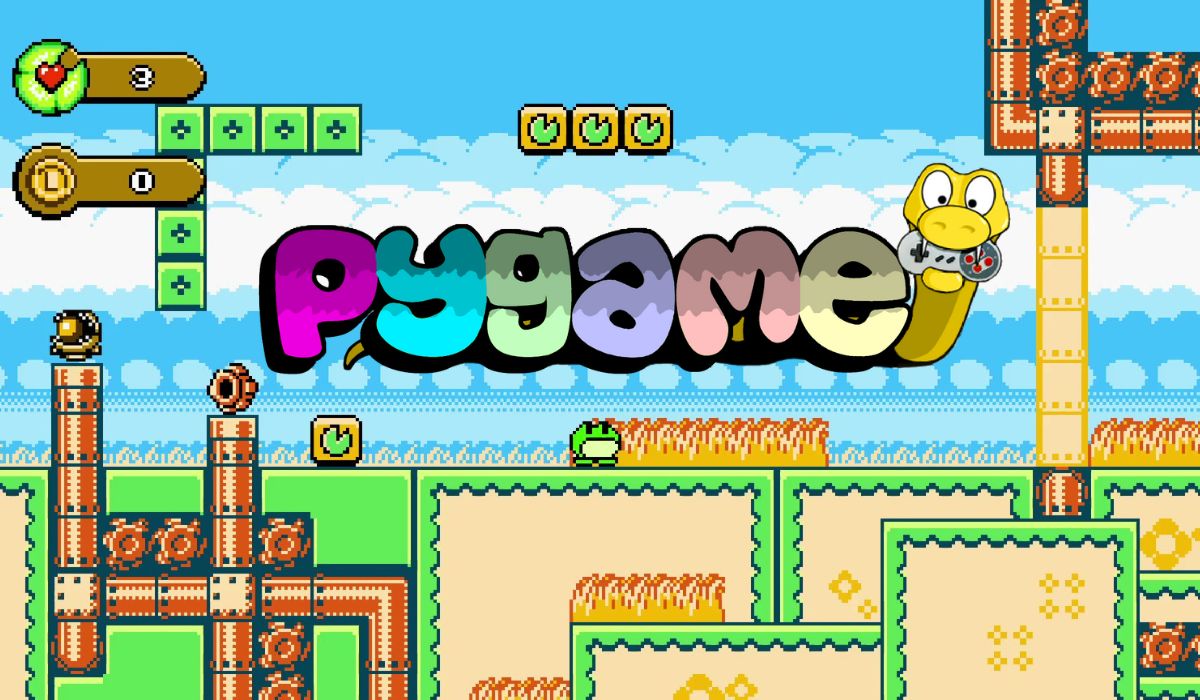Python Game Development: Creating Entertainment Through Code | Python Central (original) (raw)
This article is part of in the series
Published: Friday 16th May 2025
Python has become one of the most versatile programming languages, extending its reach well beyond data science and web development into the exciting world of game development. With its readable syntax and robust libraries, Python offers both beginners and experienced developers a pathway to create engaging games. This article explores the Python game development ecosystem, provides insights into popular frameworks, and discusses how you can start building your own games today.
While Python may not be the first language that comes to mind for professional game development, it offers several advantages that make it an excellent choice for many projects:
- Accessibility: Python's clean syntax makes it easier to learn and read, allowing developers to focus on game logic rather than language complexities.
- Rapid development: The language's high-level nature and extensive libraries enable quick prototyping and iteration.
- Cross-platform compatibility: Python games can typically run on Windows, macOS, and Linux with minimal adjustments.
- Vibrant community: The Python gaming community actively contributes libraries, tutorials, and support.
Popular Python Game Development Libraries
Pygame
Pygame stands as the cornerstone of Python game development. This open-source library offers a comprehensive suite of tools for creating 2D games:
- Graphics and animation support
- Sound and music playback
- Keyboard, mouse, and gamepad input handling
- Collision detection
- Sprite management
Pygame's simplicity makes it ideal for beginners while still providing enough functionality for more complex games. Many popular indie titles like "Frets on Fire" were built using Pygame.
Arcade
The Arcade library represents a more modern approach to Python game development. It leverages OpenGL for improved performance and offers:
- Simplified sprite handling
- Built-in physics support
- Tile-based map creation tools
- Controller support
- Improved performance over Pygame for many applications
Arcade is particularly well-suited for educational environments and those new to game development.
PyOpenGL
For developers looking to create 3D games in Python, PyOpenGL provides bindings to the OpenGL API. While more complex than Pygame or Arcade, it offers:
- Full 3D rendering capabilities
- Hardware acceleration
- Access to modern graphics techniques
- Integration with other Python libraries
Panda3D
Originally developed by Disney, Panda3D is a robust 3D game engine that supports:
- Advanced 3D rendering
- Physics simulation
- Audio management
- AI systems
- Networking capabilities
Panda3D has been used to create commercial games and offers a professional-grade development environment.
Pyglet
Pyglet provides a lightweight alternative for game development with:
- OpenGL graphics support
- Windowing
- Event handling
- Audio capabilities
- No external dependencies
Its minimalist approach makes it appealing for developers who prefer working closer to the metal.
Getting Started with Python Game Development
Setting Up Your Environment
Begin by installing Python and your chosen game library. For most beginners, Pygame offers the best starting point:
Next, create a basic game window to verify your setup:
import pygame
pygame.init()
screen = pygame.display.set_mode((800, 600))
pygame.display.set_caption("My First Python Game")
running = True
while running:
for event in pygame.event.get():
if event.type == pygame.QUIT:
running = False
screen.fill((0, 0, 0))
pygame.display.flip()
pygame.quit()Game Development Concepts
Regardless of the library you choose, understanding these core concepts will help you create better games:
- Game Loop: The heartbeat of your game that handles updates and rendering
- Sprite Management: Creating and manipulating game objects
- Collision Detection: Determining when objects interact
- Input Handling: Responding to player actions
- State Management: Controlling game flow between menus, levels, etc.
Types of Games You Can Create
Python's versatility allows for creating various game genres:
Arcade and Casual Games
Perfect for beginners, these games typically feature simple mechanics and are excellent learning projects. Examples include:
- Pong clones
- Snake games
- Space shooter games
- Platformers
Puzzle Games
Python's logical nature makes it ideal for puzzle game development:
- Match-3 games
- Logic puzzles
- Word games
- Physics-based puzzles
Strategy and Simulation
More complex games that manage multiple systems:
- Resource management games
- Turn-based strategy
- City builders
- Life simulations
Educational Games
Python's presence in education makes it perfect for creating learning tools:
- Math games
- Typing tutors
- Geography quizzes
- Science simulations
Challenges and Limitations
While Python offers many advantages for game development, it's important to understand its limitations:
- Performance: Python isn't as fast as languages like C++ for graphics-intensive games
- Mobile Development: Creating Python games for mobile platforms requires additional tools and considerations
- Large-Scale Projects: Managing code complexity can become challenging in bigger games
- Commercial Deployment: Packaging Python games for commercial distribution requires extra steps
The Future of Python Game Development
The Python game development ecosystem continues to evolve with:
- Improved performance through better optimization and new libraries
- Greater integration with web technologies
- Enhanced tooling for cross-platform deployment
- Growing adoption in game jams and indie development
Python game development offers an accessible entry point into the world of interactive entertainment creation. Whether you're a hobbyist looking to build your first game, an educator creating learning tools, or an indie developer prototyping new ideas, Python provides the tools you need to bring your vision to life.
Similar Articles
https://inventwithpython.com/invent4thed/
https://www.idtech.com/blog/easy-games-to-make-in-python
